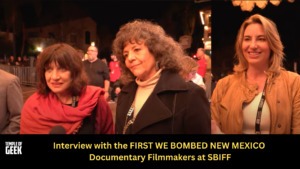Chances are one knows about the atomic bomb, Hiroshima and Nagasaki, the Manhattan Project, and thanks to auteur Christopher Nolan this year, J. Robert Oppenheimer. However, Nolan’s critical and box office hit doesn’t tell the whole story of what happened at Trinity Site, New Mexico when Oppenheimer and his team of scientists tested their bomb in 1945. The documentary FIRST WE BOMBED NEW MEXICO, which screened at this year’s Santa Barbara International Film Festival (SBIFF), tells the picks up where Nolan left off.
ABOUT THE DOCUMENTARY
FIRST WE BOMBED NEW MEXICO tells the previously untold and silenced story of thousands of New Mexicans – mostly Hispanic and Native American – who were exposed to catastrophic levels of radioactive fallout. Not only were they exposed, they were never warned, never acknowledged, and never helped afterwards. Generations of cancers followed. The documentary primarily follows Latina businesswoman and cancer survivor, Tina Cordova as she ignites a grassroots movement in New Mexico and demands justice exposing what the US government knew, and covered up, with an indifference to the poisoning of its own citizens.
WATCH THE FIRST WE BOMBED NEW MEXICO TRAILER
KAT DOUGLAS’S EXPERIENCE WITH THE EFFECTS OF THE TRINITY BOMB
Katherine “Kat” Douglas is a Santa Barbara native who tragically she lost her husband Trevor to cancer after he was exposed to radiation when he lived near the Trinity Bomb site as a child. Temple of Geek had the privilege of speaking with Douglas when the documentary screened on her “home turf” at SBIFF.

Despite the sobering subject matter, Douglas makes an eloquent and personable interview subject. Most glaringly however, she is far too young to be a widow. Yet, decades of government conspiracy and apathy have made her one. Douglas states:
“My late husband grew up in New Mexico. He moved there at the age of ten, his family moved them there and they were able to buy a house twelve miles away from the Trinity bomb site…They like to pretend its safe down there, they like to open it up to the public twice a year. They’ve got the White Sands National Park where kids go and roll around in the sand. It is not safe, it is not safe for anybody to visit. And I think my husband, unfortunately, was a testament to that.”
Trevor lived in New Mexico from ages ten to eighteen. By age thirty-five, he was diagnosed with brain cancer. Douglas described Trevor’s cancer, Glioblastoma, as “very aggressive, very fast-moving” and he underwent two brain surgeries. Remarkably, it was Trevor, while battling cancer, who sought out the documentary’s main participant, Tina Cordova, and became involved with the film.
“He was a man on fire. He was so inspired to get his story out, because you know, he grew up there and had no idea of the history in that area. He wanted people, wanted Americans to know, what had transpired with their government. The fact that the government bombed their own citizens before they bombed Japan and he wanted to use his story as a force of good.”
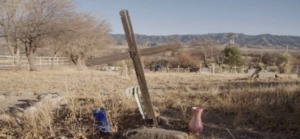
Douglas’s nobility in continuing what was essentially her husband’s dying wish is equally heartening and enraging. It’s a mantle she shouldn’t have to bear, but does so with grace and ferocity. So much so, that it seems undeniable that she, Cordova (who also got cancer as a result of living near the bomb site), and FIRST WE BOMBED NEW MEXICO’s director Lois Lipman will affect change surrounding this issue.
WATCH OUR INTERVIEW WITH FIRST WE BOMBED NEW MEXICO’S KAT DOUGLAS
FIRST WE BOMBED NEW MEXICO IGNITES THE FESTIVAL CIRCUIT
The film premiered at the Santa Fe Film Festival, where it won Best New Mexican Documentary and Audience Choice. Since then, FIRST WE BOMBED NEW MEXICO has screened at prestigious festivals such as the Austin International Film Festival and the Palm Springs International Film Festival, where it won Best of Fest. Most recently at SBIFF, the documentary’s showings sold out due to popular demand, and an additional screening was added.
Douglas described watching FIRST WE BOMBED NEW MEXICO as a bittersweet experience. “I’m like, this is all you [Trevor]! You put these wheels into motion. Your story is out there because you were so compelled to tell it. I feel so inspired still by him and just so honored that I get to carry forth what he set in motion.”
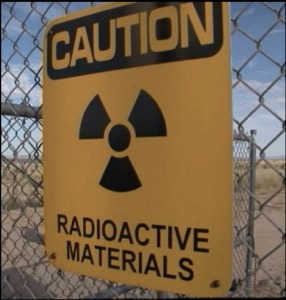
WE ARE ALL DOWNWINDERS
Douglas’s bravery and resolve cannot be overstated. Who and what she fights for is beyond herself, since one of the most chilling revelations from FIRST WE BOMBED NEW MEXICO is that, forget New Mexico, most of the United States is downwind from the Trinity bomb and subsequent similar weapons tests.
This isn’t just a contained thing. Yes, New Mexican people were bombed. But a recent study out of Princeton using historical weather data followed the radioactive cloud…they reenacted the fallout cloud and it went to forty-six states, Mexico, and Canada. And that is one bomb. That’s one bomb. There’s been ninety-four [instances of] above ground atomic testing in Nevada, Utah, most of the West, really. So there’s a lot of people living downwind of these blasts and they have no idea.
WHAT WE CAN DO ABOUT IT
Douglas’s words are harrowing, however there is something we can all do. Douglas, Cordova, and others are fighting to renew RECA (Radiation Exposure Compensation Act). Congress has until June 2024 to expand legislation and give reparations to harmed families in New Mexico. Nevada Cold War nuclear test victims have been helped since 1990.
“My ask is, if you can call your Congressperson, your Senator and let them know that this is an important bill, not only for New Mexicans, of course, but for a lot of states in the US. Just really compel them and let them know that this is a meaningful act and it needs to be renewed in June 2024.”
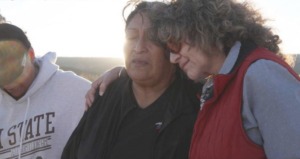

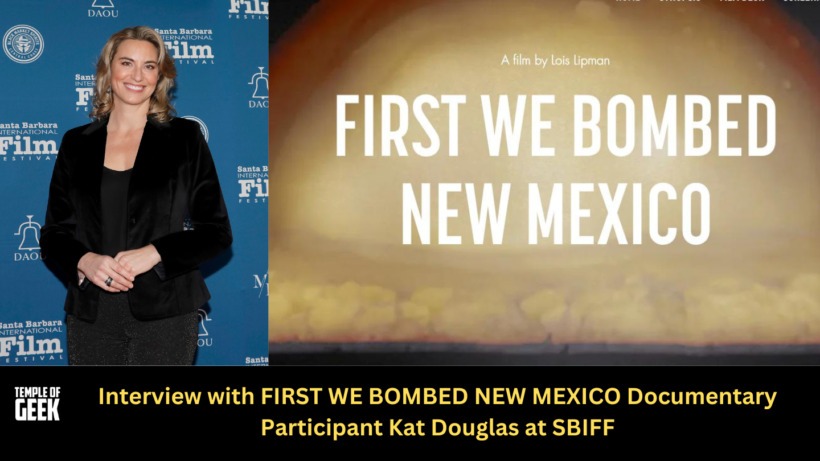
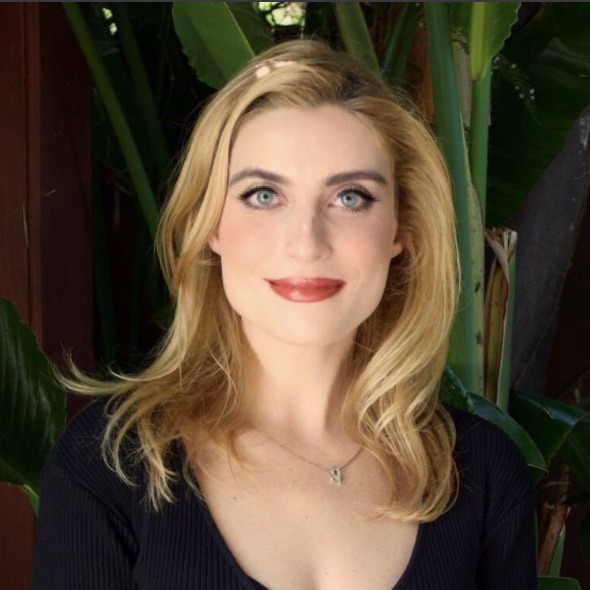
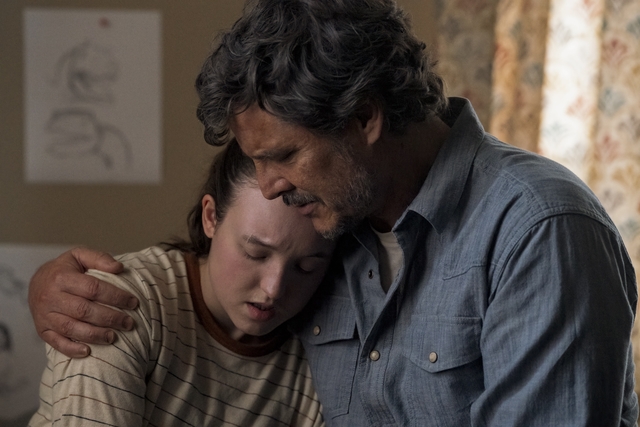
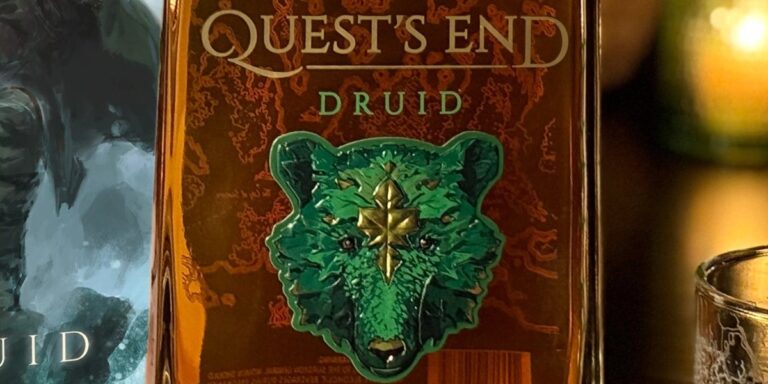

![[INTERVIEW] Creature Designer Neville Page Discusses Book ‘Beauty in the Beast’ Kickstarter & 20+ Year Career](https://templeofgeek.com/wp-content/uploads/2025/04/In-Camera-YouTube-Cover-768x432.png)

![[REVIEW] Foster Cat Productions Resurrects Mel Brooks’ Musical “Archy & Mehitabel” on Stage](https://templeofgeek.com/wp-content/uploads/2025/03/Screenshot-2025-03-10-at-12.11.04 PM-768x625.png)

